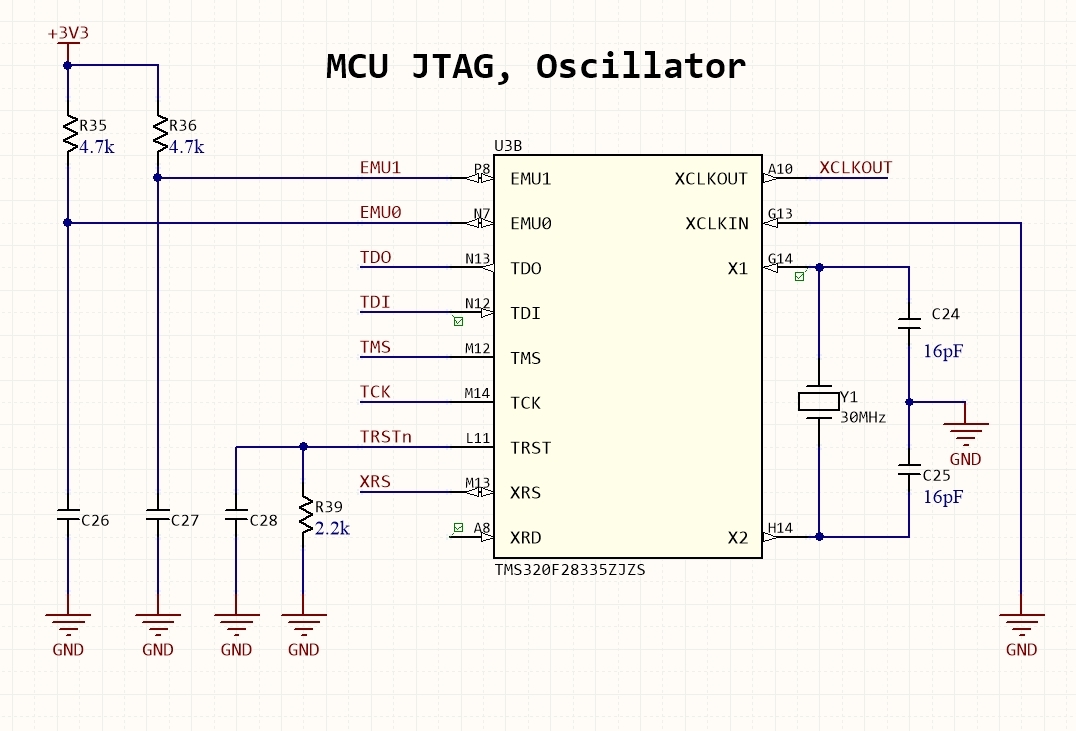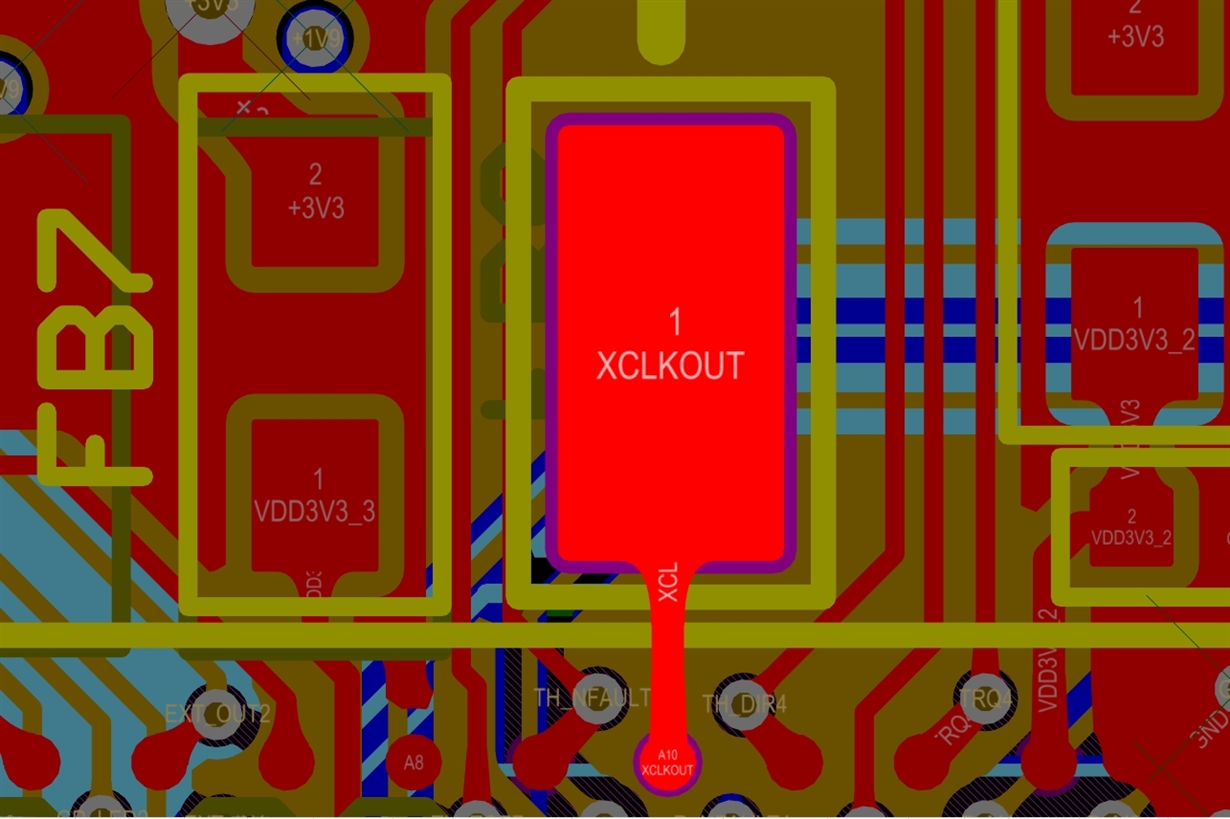I'm having an issue on a board I am testing.
I have a scope connected to the XCLKOUT pin of the F28335. When I power the board on, the signal shown is a square wave of ~3.7MHz, which changes to a square wave of ~1.9 MHz about every second. I believe the change is due to the external reset supervisor which expects a watchdog reset every so often. When I hold the device in reset only the ~1.9MHz clock is present.
I'm not sure why this is. Do I need to change any configuration settings for the oscillator to start? I've attached some pictures of the clock schematic and board layout. I believe this is all set up correctly but...no clock!
The capacitors are directly beneath the crystal on the bottom side.
This is the crystal being used: 
Any advice?





